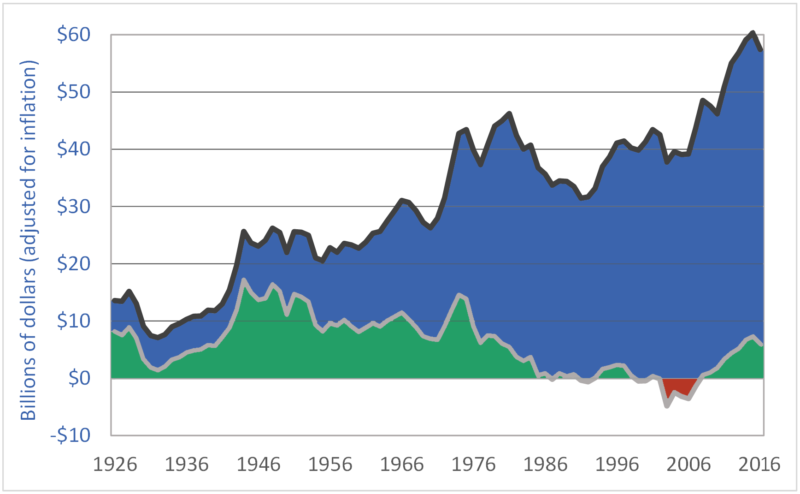Cash flow is used because it represents economic value, while accounting metrics like net income do not. A company may have positive net income but negative cash flow, which would undermine the economics of the business. Cash is what investors really value at the end of the day, not accounting profit. As an equity analyst, rather than making our own assumptions, we can use a DCF model to ask the question “what has to be true for the current share price to be correct? ” This can give us a very useful insight into the cheapness/expensiveness of a share.
Guide to the Discounted Cash Flow DCF Formula
Since we’re using unlevered free cash flow, this section is actually not that important to the DCF model. It is, however, important if you are looking at things from the perspective of an equity investor or equity research analyst. Investment bankers typically focus on enterprise value, as it’s more relevant for M&A https://accounting-services.net/ transactions, where the entire company is bought or sold. Investors’ required rate of return (as discussed above) generally relates to the risk of the investment (using the Capital Asset Pricing Model). Therefore, the riskier an investment, the higher the required rate of return and the higher the cost of capital.
Applications of DCF in Corporate Finance
We are not going to cover details of market multiples here, if you are interested, please go to here to learn more. To determine the changes in working capital in the projection period, very often we will need to do a forecast by ourselves if we don’t have a projected balance sheet. Common techniques in forecasting the working capital includes benchmarking to the revenue and turnover days etc. For the sake of time we are not going to cover how to define working capital and forecasting method in this article. In the sample forecast, we have already projected the working capital balance for you. A common way this is presented is by using a football field valuation matrix.
Which of these is most important for your financial advisor to have?
Much like any other valuation method, the DCF model was designed for a specific application with certain assumptions, which means it has a few limitations that you need to be aware of. The DCF model can be used to value a wide variety of investments, projects, or companies. The DCF model can provide valuable insight into a company’s future performance. For example, if an investor requires a higher return, they can simply adjust the discount rate accordingly.
What Is the Discounted Cash Flow (DCF) Model?
So, based on our DCF model analysis, the total value of Mayweather Inc. is just over $13.5 million. The first step in conducting a DCF analysis is to estimate the future cash flows for a specific time period, as well as the terminal value of the investment. A future cash flow might be negative if additional investment is required for that period. On this basis, DCF would value Apple at around $187.50 per share, 7% below its stock market price at the time. In this case, DCF provides one indication that the market may be paying a good price for Apple common stock. Smart investors might look to other indicators, such as the inability to sustain cash flow growth rates in the future, for confirmation.
Projection Period and Terminal Year
- DCF analysis uses future free cash flow projections and discounts them to arrive at a present value estimate, which is used to evaluate the potential for investment.
- A considered project should be ranked compared to other potential investment projects competing for funding.
- All of our content is based on objective analysis, and the opinions are our own.
- Essentially, changing the underlying assumptions (like those used in the financial statements) will provide a range of values that the business could be worth.
After computing the discount factor, we can simply multiple it with the cash flow for the year to get the present values of cash flows. Based on the timing of cash flows, we cancalculate how long (in terms of year) they are from the valuation date. For theFY19 how to calculate contributed capital cash flow, we need to discount 0.5 year; For the FY20 cash flow, we need1.5 year and so on. Get instant access to video lessons taught by experienced investment bankers. Learn financial statement modeling, DCF, M&A, LBO, Comps and Excel shortcuts.
However, let’s suppose that the model is being created from scratch in which case, we must project it first from the balance sheet (BS) and income statement (IS), as well as the supporting schedules. If the DCF value calculated is higher than the current cost of the investment, the opportunity should be considered. If the calculated value is lower than the cost, then it may not be a good opportunity, or more research and analysis may be needed before moving forward with it. Despite the advantages of the DCF analysis, it is also exposed to some disadvantages. The main drawback of DCF analysis is that it’s easily prone to errors, bad assumptions, and overconfidence in knowing what a company is actually “worth”.
These cash flows would then be discounted back to present value, and the resulting figure would be compared to the cost of the investment. These cash flows are then discounted back to present value, and the resulting figure is divided by the number of shares outstanding. Equity analysts use the DCF model to estimate the fair value of a company’s stock. The number of periods is the number of years over which the cash flows are expected to occur. The discount rate is often set at the investor’s required rate of return, which is the minimum return that they require in order to invest in a company. Discounting cash flows is important because it takes into account the fact that money today is worth more than money in the future.
For example, if a company is looking to invest in a new factory, the cash flow from that investment would be the revenue generated from selling the products produced by the factory. For instance, if the organization has $5 million of EBITDA and the other companies are trading at 5x, you multiply these two values to get $25 million. Regardless of which method is used, the terminal value would be discounted to the present day to get its net present value. The WACC incorporates the average rate of return that shareholders in the firm are expecting for the given year. The time value of money assumes that a dollar that you have today is worth more than a dollar that you receive tomorrow because it can be invested.
We will discuss how to use the Gordon growth and H model in detail in later sections. As with the non-operating assets, finance professionals usually just use the latest balance sheet values of these items as a proxy for their actual values. This is usually a safe approach when the market values are fairly close to the balance sheet values. Unlike operating assets such as PP&E, inventory, and intangible assets, the carrying value of non-operating assets on the balance sheet is usually fairly close to their actual value. That’s because they are mostly comprised of cash and liquid investments that companies generally can mark up to fair value. That’s not always the case (equity investments are a notable exception), but it’s typically safe to simply use the latest balance sheet values of non-operating assets as the actual market values.
TV is used because we cannot accurately estimate the cash flow generated by an investment to perpetuity (indefinitely). Dividend discount models, such as the Gordon Growth Model (GGM) for valuing stocks, are other analysis examples that use discounted cash flows. Using the DCF formula, the calculated discounted cash flows for the project are as follows. To conduct a DCF analysis, an investor must make estimates about future cash flows and the ending value of the investment, equipment, or other assets.
As you can see there is a heavy focus on financial modeling, finance, Excel, business valuation, budgeting/forecasting, PowerPoint presentations, accounting and business strategy. If you’re looking for the equity value of the business, you take the net present value (NPV) of the unlevered free cash flow and adjust it for cash and equivalents, debt, and any minority interest. This will give you the equity value, which you can divide by the number of shares and arrive at the share price. This approach is more common for institutional investors or equity research analysts, both of whom are looking through the lens of buying or selling shares. No, DCF refers to the overall method of discounting cash flows, while net present value (NPV) is the output of a DCF valuation. NPV is the sum of the present values of all future cash flows less the cost of the investment today.
A firm’s Weighted Average Cost of Capital (WACC) represents the required rate of return expected by its investors. Therefore, it can also be thought of as a firm’s opportunity cost, meaning if they can’t find a higher rate of return elsewhere, they should buy back their own shares. Choosing the appropriate discount rate for DCF analysis is often the trickiest part.
As with most valuation methods, assumptions are used to make projections that are subject to inaccuracies. However, with the DCF model, the usual time frame of five to ten years means that even slight errors in the assumptions for the first or second year could compound and lead to a drastically different result. For example, suppose a business has a cash flow of $10 million expected to grow at 1% into eternity and a WACC of 11%. In that case, their terminal value will be calculated as $100m ($10 million / (11% – 1%)).
M&A teams also set the enterprise value using company comparables for other recent deals in the industry. Public companies have a higher per-share valuation price than private companies. Privately-held companies are discounted to a lower fair value due to a lack of share marketability and higher risk profiles.
In this chapter, let us implement the discounted cash flow valuation (DCF) model within the primary model. The DCF formula is used to determine the value of a business or a security. It represents the value an investor would be willing to pay for an investment, given a required rate of return on their investment (the discount rate). If you do this correctly, you’ll get the same result as the discounted cash flow example below that was calculated using a spreadsheet. The example assumes year 1 cash flow of $225,000, a 10% increase in cash flow per year, 5 as the number of years, and an 8% discount rate. So we need to take into account the cash flows beyond the terminalyear as well.
The DCF model focuses on a company’s cash flows, determining the present value of the entire organization and then working this down to the share-value level based on total shares outstanding of the subject organization. This highly regarded methodology is the evaluation tool of choice for experienced financial analysts when evaluating companies and their common stock. Many analysts prefer DCF methods of valuation because these are based on a company’s cash flows, which are far less easily manipulated through accounting treatments than revenues or bottom-line earnings. Discounted cash flow uses a discount rate to determine whether the future cash flows of an investment are worth investing in or whether a project is worth pursuing. The discount rate is the risk-free rate of return or the return that could be earned instead of pursuing the investment.
Without considering the time value of money, this project will create a total cash return of $180,000 after five years, higher than the initial investment, which seems to be profitable. However, after discounting the cash flow of each period, the present value of the return is only $146,142, lower than the initial investment of $150,000. The CFn value should include both the estimated cash flow of that period and the terminal value. The formula is very similar to the calculation of net present value (NPV), which sums up the present value of each future cash flow. The only difference is that the initial investment is not deducted in DCF. If you are building a small company and hope to sell it one day, DCF valuation can help you focus on what is most important–generating steady growth on the bottom line.






